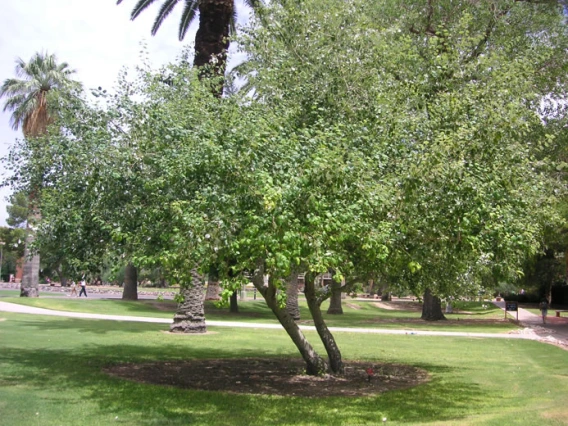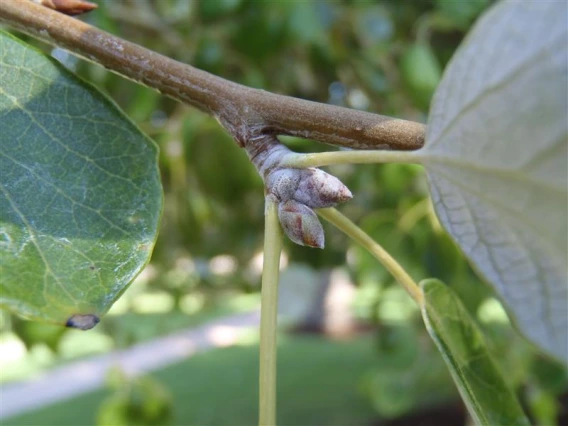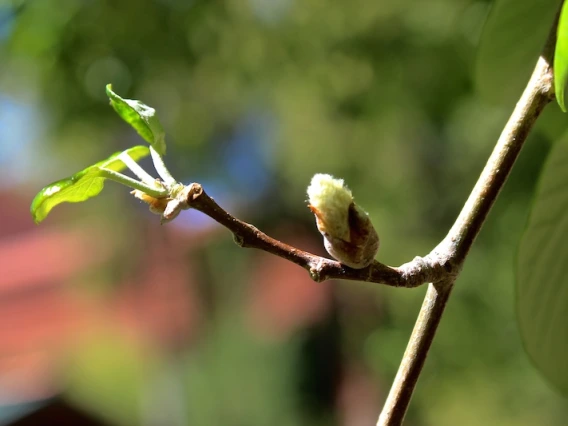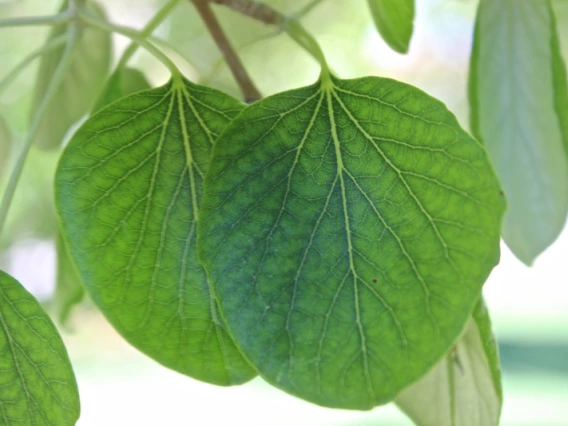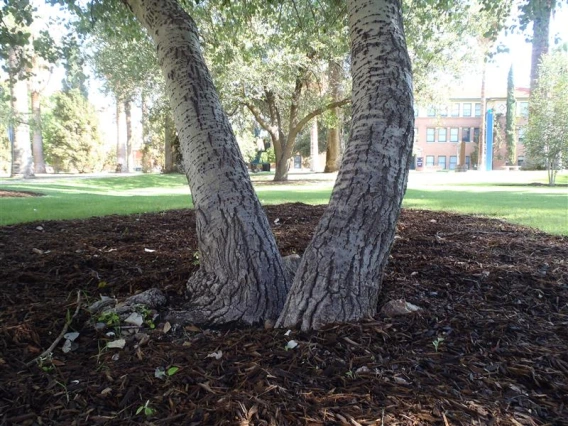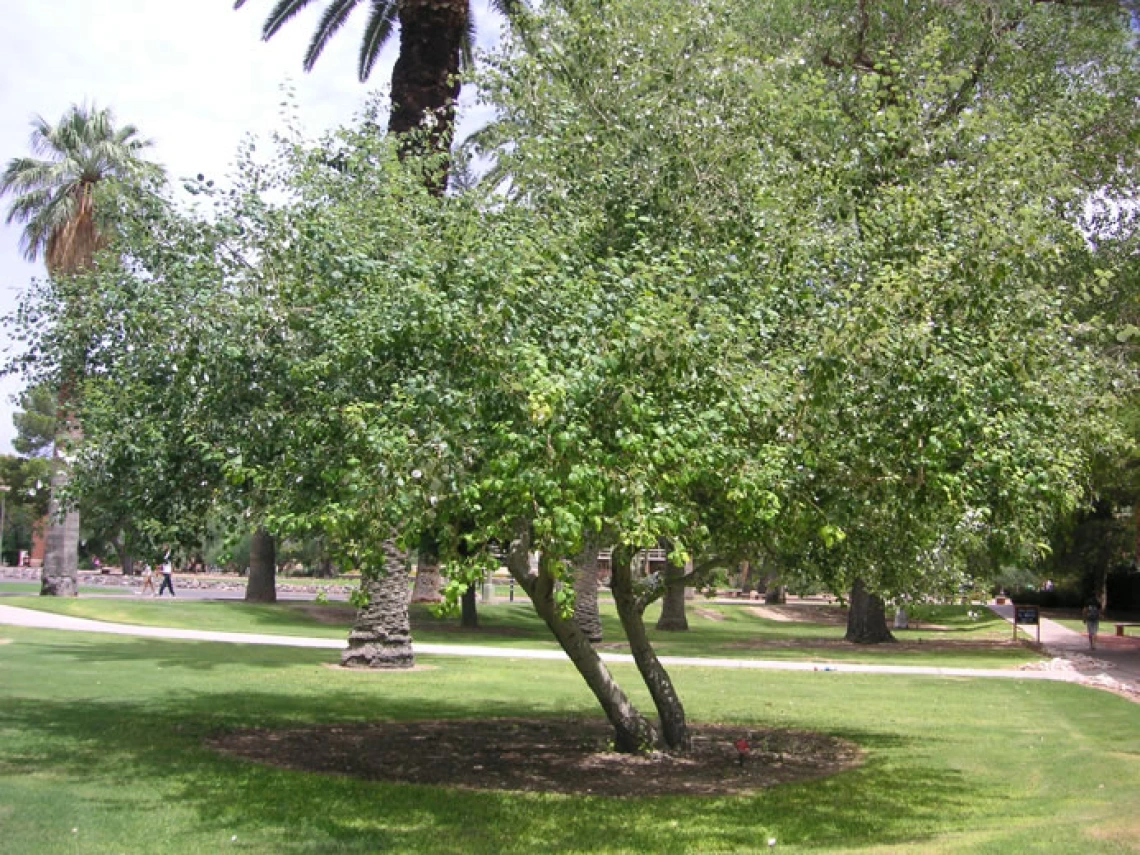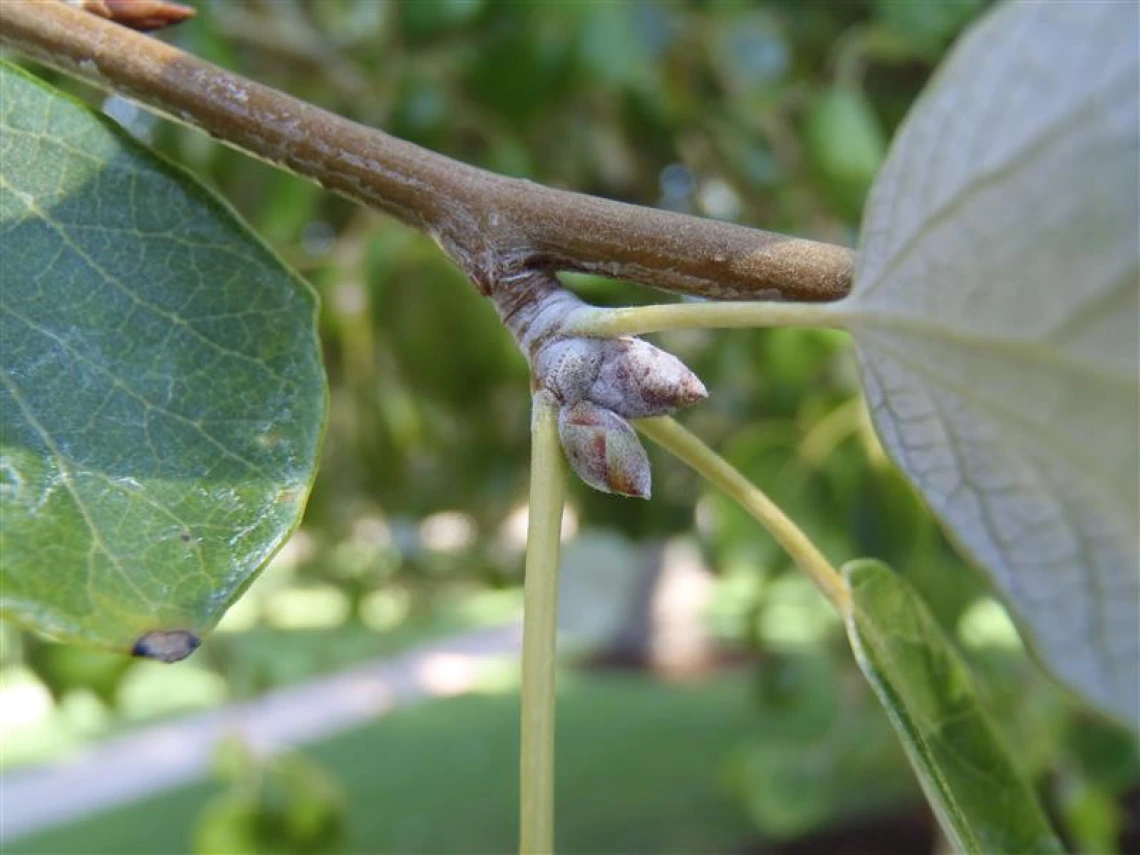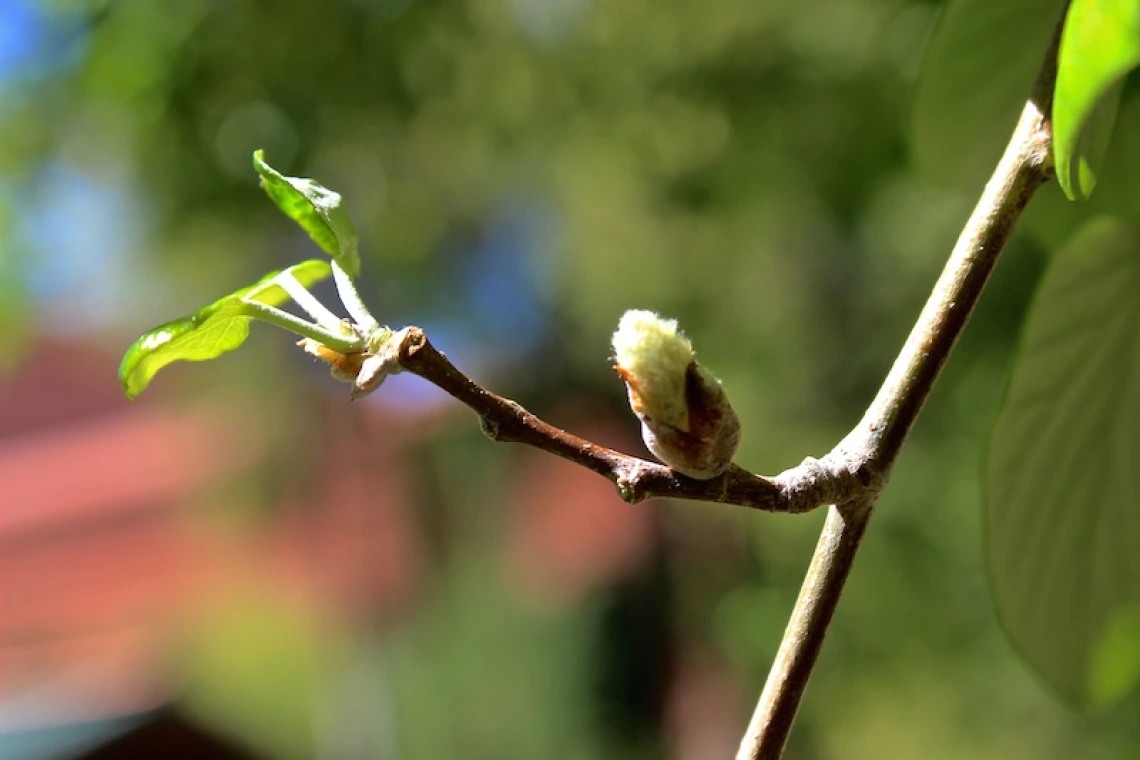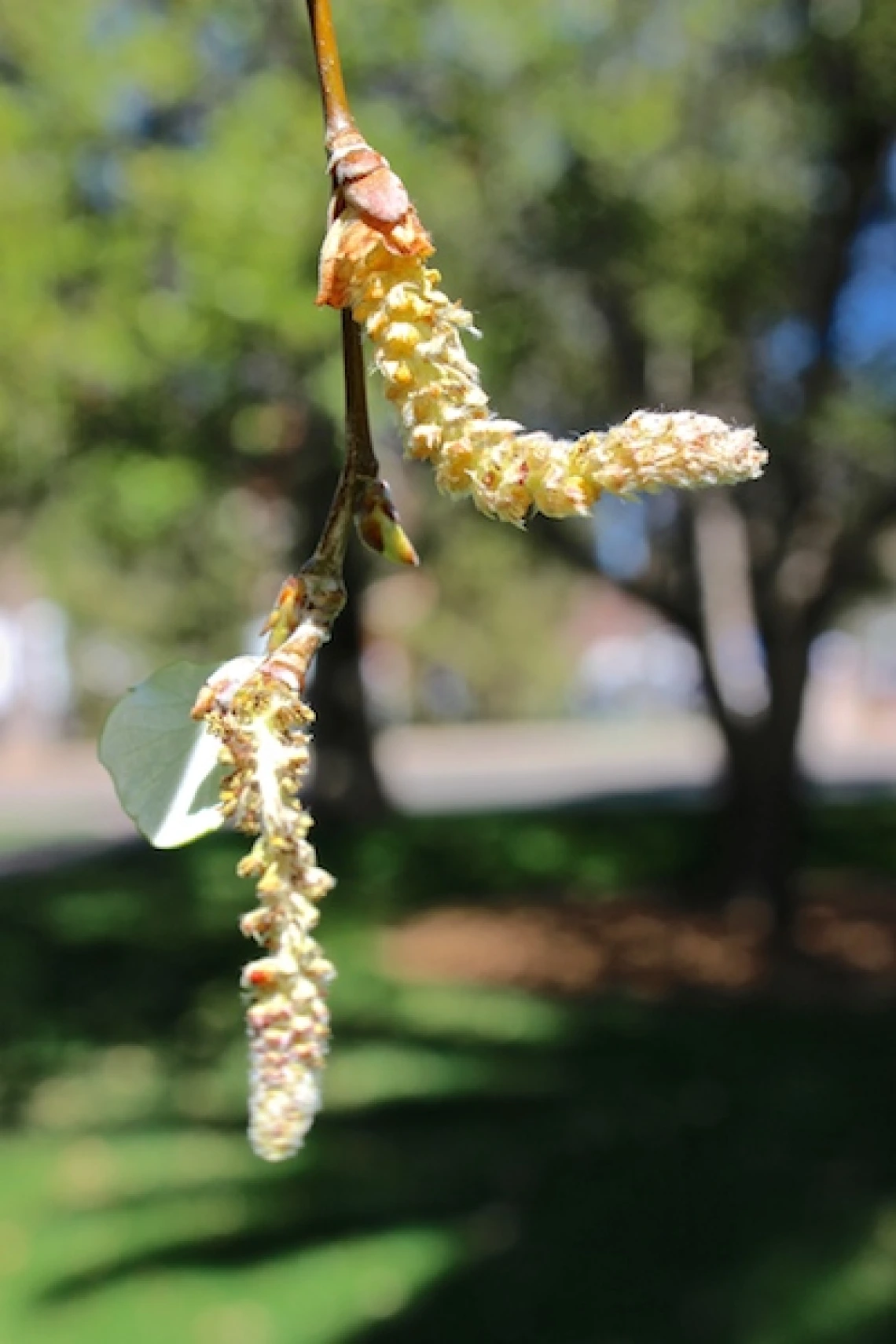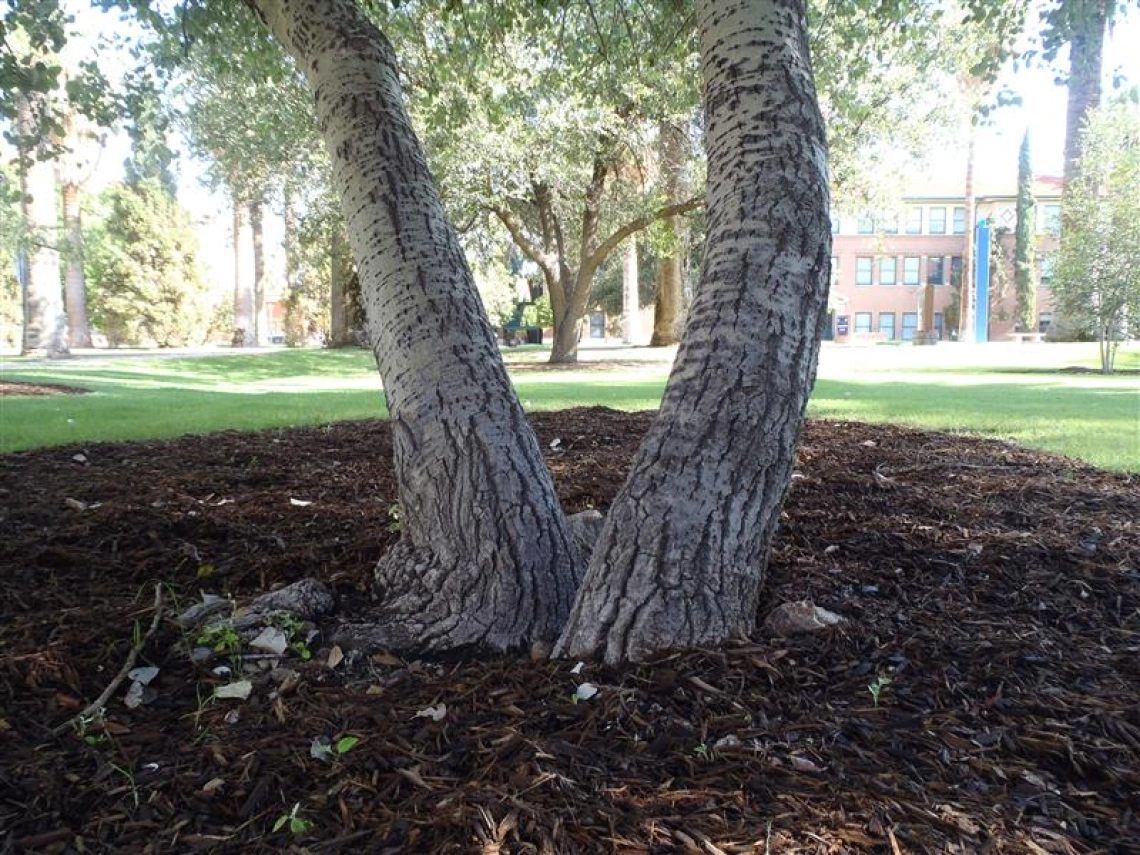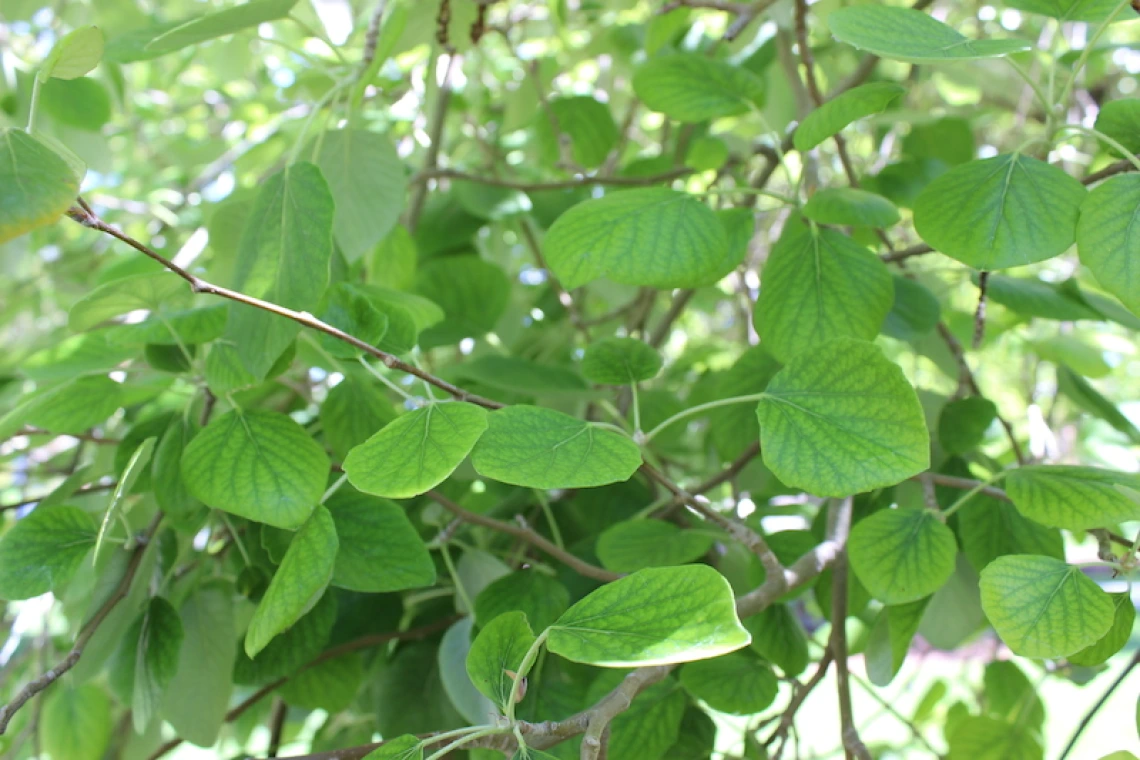Arboretum History Virtual Tour
Populus alba | Salicaceae | white poplar
Historical Context:
Lush plantings from the east coast were popular between 1930 and 1950. Trees, adapted to riparian areas, including the sissoo and poplars seen north of the Social Sciences building, were planted and established in flood irrigation berms using well water. The ample water these trees received by flood irrigation helped them produce deep roots and thrive for many decades. Grass planted during this period also provided supplemental moisture. When the UA switched to overhead/spray irrigation (watering just deep enough for the turf), some of the trees began to fail. The Deodar Cedars that were growing West of the Douglass building are an example of this problem.


